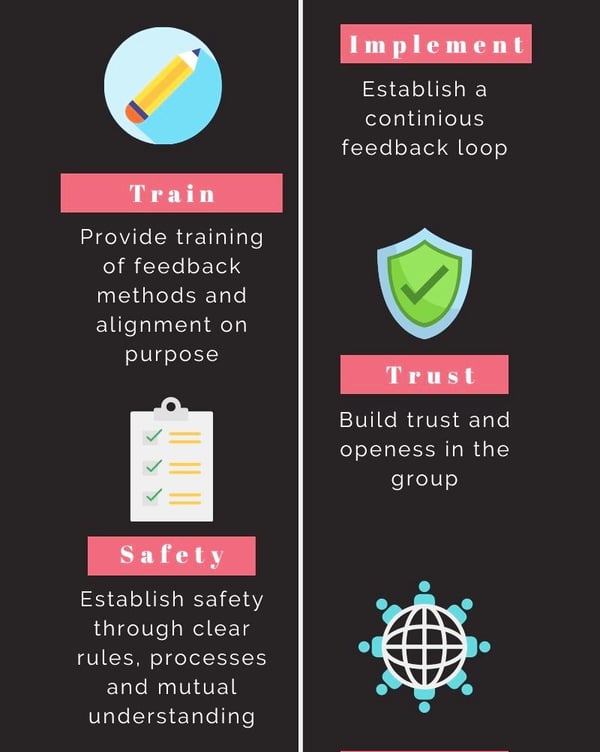How to Build a Feedback Culture
The importance of feedback and how we can use it for personal development.
PERSONAL DEVELOPMENT
Andy
Development entails the ability to question our own thinking. Although this self-reflection allows us to dive deeper into understanding, it can be much more impactful if we also learn how others perceive our decisions and actions.
Learning how to give and receive feedback can enhance our personal and professional development by providing clarity on our strengths and weakness as well as areas we could develop further. It will give confidence and motivation, allowing you to know better yourself. However to reach the level of honest and healthy feedback a good feedback culture should be in place that will allow for such type of exploration.
So, let us take a look at how a good feedback culture can be cultivated.


Building a feedback culture
Creating a good feedback culture start with defining the boundary of the group we would like to establish this culture. It could be a group of people that has a specific project or task, it could be a team, a class, a couple, a family, an organization, a community, in general, it could be any large or small group of people that can either be physically in close proximity or not. Although it is worth noting that the largest the group it gets the more effort, we shall place on creating the feedback culture, since training on how to give and receive feedback is also part of the equation.
Once the group is defined, then we look at the context behind each individual. There are country cultures that are much more open to feedback and others that see the act of giving and receiving feedback more as a form of criticism rather than as an opportunity for development. We need to be cautious about this because one of the essential elements for feedback to occur is safety. Creating a sense of safety will be the first step, and the more cultural backgrounds there are in the group the more effort we shall place in bringing everyone under the same foundation.
Once we have safety in place, then we need to establish the second element that enables feedback which is building trust. This can start by having all members being trained under a common feedback purpose. A part of this training is to appreciate the fact that feedback is given for the greater good of the group and to trigger further development.
Growing a continuous feedback loop
As we mentioned before one of the elements of a good feedback foundation is safety. We can create this safe environment by setting the frame and rules on how the feedback is to be done. The idea here is that once a member e.g. would like to receive feedback the other member will be prepared and give the feedback by following the rules. The rules of course need to be set so they stimulate a constructive dialogue, using the right wording and phrases to support dialogue in this sensitive topic.
Another important aspect is the feedback needs to be specific and ideally to occur almost at the same time as the event that triggers the feedback happened - so does not necessarily require a formal occasion. The key thing is that each member knows how to give feedback and is also encouraged to give feedback - preferably starting with positive feedback before moving to development/improvement feedback.
However, the above entails that all members are fully aligned on the benefits of feedback as well as being proactive, which is a very ideal scenario in real life. Thus, especially in the beginning when all the idea about having a feedback culture is new; in order to have a continuous feedback loop, it might be beneficial to allocate a specific time or occurrence where feedback should take place under the safety rules. This could actually support growing a feedback culture easier than only relying on a proactive approach.


